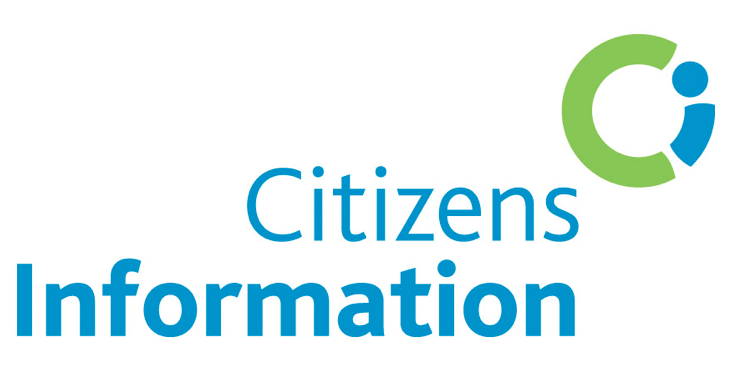
 Know Your Rights has been compiled by Kerry Citizens Information Service which provides a free and confidential service to the public…
Know Your Rights has been compiled by Kerry Citizens Information Service which provides a free and confidential service to the public…
An end-of-life vehicle (ELV) is a car or light commercial vehicle (of less than 3.5 tonnes) which is due to be disposed of or scrapped.
So, when a car gets old and can’t be used anymore, it becomes an ELV. It’s important to recycle and dispose of ELVs properly so they don’t harm the environment.
You must dispose of an end-of-life vehicle using licensed authorised treatment facilities (ATFs). These are also called permitted scrapyards. End of life vehicles contain hazardous materials that can damage the environment.
Continued below…

They can pose a risk to public health if not disposed of in a safe manner. For example, vehicles that contain lead acid batteries, lubricating oil, coolant, brake fluid, and catalytic convertors.
To make sure that old cars are disposed of in a proper way, there is a compliance scheme (ELVES) in place. This is to help improve standards in disposing of end-of-life vehicles.
You are committing a criminal offence if you (or an authorised treatment facility) dispose of an end-of-life vehicle illegally.
There is no charge for disposing of an ELV at an authorised treatment facility. When you have given your vehicle to an ATF, you should get a certificate of destruction.
If you (or an authorised treatment facility) dispose of an end-of-life vehicle illegally, you are committing a criminal offence.
Where can I bring my end-of-life vehicle?
You must leave an end-of-life vehicle at an authorised treatment facility. You will find details of these facilities on elves.ie
Each vehicle manufacturer or importer must have a national collection system in place. It must be with at least one treatment facility in every city and council area.
These facilities provide a free take-back service for vehicles of that producer’s brand. Independent treatment facilities are also available.
If you leave an end-of-life vehicle at an unauthorised facility, you will not get a certificate of destruction. You may remain recorded as registered owner of the vehicle on the National Vehicle File.
Authorised treatment facilities are not responsible for transporting your vehicle. You will have to arrange to bring the ELV to the facility yourself.
When you have left your vehicle at an authorised treatment facility, the owner or operator of the facility will:
• Issue you (if you are the registered owner) with a certificate of destruction
• Forward the details of the certificate of destruction to the National Vehicle and Driver File. These records are kept by the Department of Transport
Continued below…

What services must an authorised treatment facility provide?
An operator of an authorised end-of-life vehicle treatment facility must:
• Issue the registered owner with a certificate of destruction (either electronically or in paper form)
• Make sure the facility is operated under an appropriate waste licence or permit
• Meet the minimum technical requirements for the storage, treatment and recovery of end-of-life vehicles and the storage of components containing fluids, spare parts, etc
• Keep records of end-of-life vehicle materials for reuse, recycling, recovery and disposal and report these records to local authorities annually
The vehicle must be treated within 10 days of being deposited at the facility.
Treating the vehicle includes:
• Removing the battery or batteries
• Removing the liquefied gas tank
• Removing (or neutralising) potentially explosive parts (including air bags)
• Removing, collecting, and storing fuel, oils, and other fluids (for example, brake fluid)
• Removing any parts containing mercury
All other parts of the car should, where possible, be recycled.
How much does disposing an end-of-life vehicle cost?
You cannot be charged for leaving an end-of-life vehicle at an authorised treatment facility, if:
• You are the registered owner of that vehicle and
• The vehicle is intact
If important parts of your car are gone (like the engine, gearbox or transmission), or there is waste inside your car, you might be charged.
What documents do I need to bring with me?
You must bring the vehicle registration certificate or log book with you.
Can I claim a refund of motor tax?
You may be able to claim a refund of motor tax if there is more than 3 months unexpired tax. You need a certificate of destruction from an end-of-Life vehicle authorised treatment facility. Contact your local motor tax office for more information.
How do I find an authorised treatment facility?
ELVES, the industry compliance authority has a searchable database of authorised treatment facilities (or scrapyards). The website is www.elves.ie
Are there penalties for illegally disposing of an end-of-life vehicle?
You are committing a criminal offence if you (or an authorised treatment facility) dispose of an end-of-life vehicle illegally.
If you do not take your car to an authorised treatment facility, you can be fined €100. If you don’t follow the rules about getting rid of your old car, like getting a certificate that says it was destroyed, you might have to pay a fine of €1000.
The Environment (Miscellaneous Provisions) Act 2015 introduced fixed payment notices (on the spot fines) for certain offences.
Other penalties for offences are set out in Regulation 35 of the Regulations and are:
• Summary conviction: a class A fine or 12 months imprisonment (or both)
• Conviction on indictment: a fine of up to €500,000 or 3 years imprisonment (or both)
• Deirdre Vann Bourke, Kerry Citizens Information Manager, said: For anyone needing information, advice or have an advocacy issue, you can call a member of the local Citizens Information team in Kerry on 0818 07 7860, they will be happy to assist and make an appointment if necessary.
The offices are staffed from Monday to Friday from 10am to 4pm. Alternatively you can email on tralee@citinfo.ie or log on to www.citizensinformation.ie for further information.
………………………………………………………………………………………………………………………………………………………………………………………………………………………………………………………………………………………………………………………………
